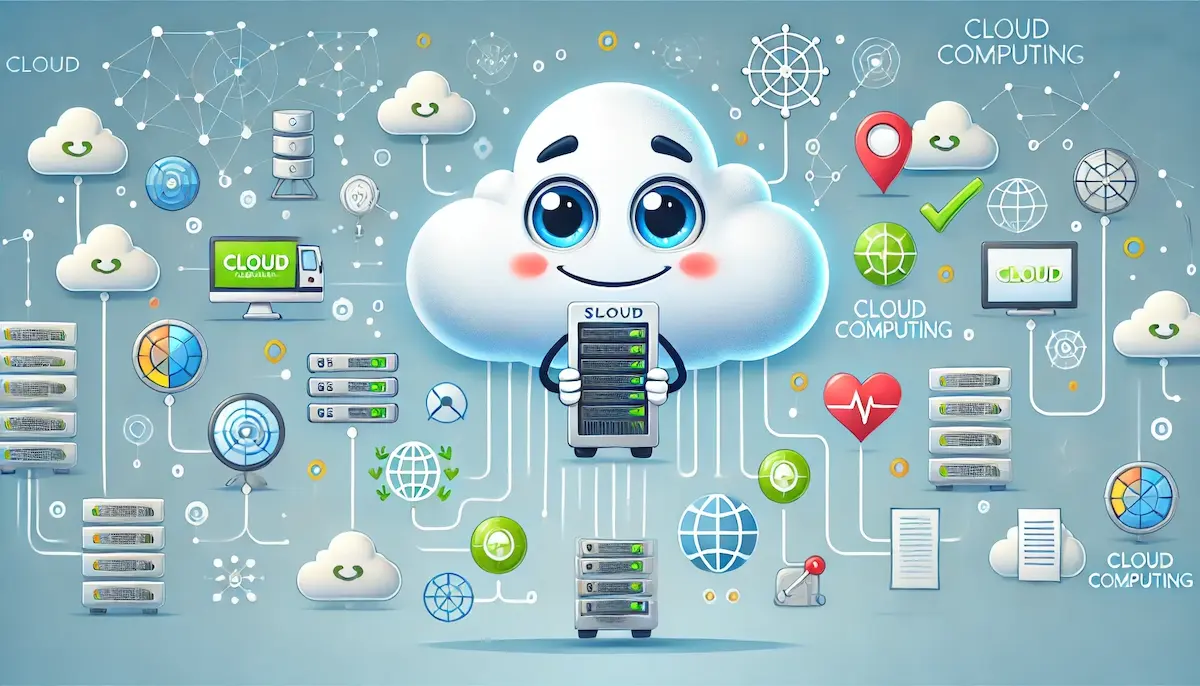Cloud computing is a transformative technology that allows individuals and businesses to access computing resources—such as servers, storage, databases, networking, software, and analytics—over the internet. Instead of owning and maintaining physical data centers and servers, users can leverage the power of cloud services to enhance their operations, improve scalability, and reduce costs.
How Cloud Computing Works
Cloud computing works by delivering computing services through a network of remote servers hosted on the internet, rather than a local server or a personal computer. These remote servers store and manage data, run applications, and provide computing power as needed.
Key Characteristics of Cloud Computing
- On-Demand Self-Service: Users can provision computing capabilities as needed automatically without requiring human interaction with each service provider.
- Broad Network Access: Cloud services are available over the network and accessed through standard mechanisms that promote use by heterogeneous thin or thick client platforms (e.g., mobile phones, tablets, laptops, and workstations).
- Resource Pooling: The provider’s computing resources are pooled to serve multiple consumers using a multi-tenant model, with different physical and virtual resources dynamically assigned and reassigned according to consumer demand.
- Rapid Elasticity: Capabilities can be elastically provisioned and released, in some cases automatically, to scale rapidly outward and inward commensurate with demand.
- Measured Service: Cloud systems automatically control and optimize resource use by leveraging a metering capability at some level of abstraction appropriate to the type of service (e.g., storage, processing, bandwidth, and active user accounts).
Types of Cloud Services
Cloud computing services can be categorized into three main types:
Infrastructure as a Service (IaaS)
IaaS provides virtualized computing resources over the internet. It offers essential compute, storage, and networking resources on a pay-as-you-go basis. Examples include Amazon Web Services (AWS), Microsoft Azure, and Google Cloud Platform (GCP). IaaS allows businesses to avoid the expense and complexity of buying and managing physical servers and data center infrastructure.
Platform as a Service (PaaS)
PaaS provides a platform allowing customers to develop, run, and manage applications without the complexity of building and maintaining the underlying infrastructure. PaaS includes tools and services designed to make coding and deploying applications more efficient. Examples include Heroku, Google App Engine, and Microsoft Azure App Services.
Software as a Service (SaaS)
SaaS delivers software applications over the internet, on a subscription basis. Users can access SaaS applications via a web browser, eliminating the need for installations or maintenance on individual devices. Examples include Google Workspace (formerly G Suite), Microsoft Office 365, and Salesforce.
Benefits of Cloud Computing
Cost Efficiency
One of the primary benefits of cloud computing is cost savings. By using cloud services, businesses can reduce or eliminate the capital expense of purchasing hardware and software and setting up and running on-site data centers.
Scalability and Flexibility
Cloud computing offers the ability to scale resources up or down quickly and efficiently based on demand. This flexibility is particularly beneficial for businesses with fluctuating workloads or those planning for growth.
Disaster Recovery and Business Continuity
Cloud computing provides robust backup and recovery solutions, ensuring data is always available, even in the event of a disaster. Cloud providers often offer geo-redundant storage, which duplicates data across multiple locations.
Collaboration and Remote Work
Cloud computing enables better collaboration by allowing multiple users to access and work on the same data simultaneously from different locations. This capability is essential for remote work environments, where team members need to stay connected and productive.
Challenges of Cloud Computing
Security and Privacy
Although cloud providers implement robust security measures, storing data and critical applications in the cloud can raise concerns about data privacy and security. Businesses must ensure that their data is protected and that cloud providers comply with relevant regulations.
Downtime and Reliability
Cloud services can sometimes experience outages and downtime, impacting business operations. It’s essential to choose a reliable cloud provider with a strong track record and robust service level agreements (SLAs).
Compliance and Legal Issues
Different industries have varying regulatory requirements regarding data storage and management. Businesses need to ensure that their use of cloud services complies with these regulations, which can vary by region and industry.
The Future of Cloud Computing
The future of cloud computing is promising, with trends such as multi-cloud and hybrid cloud environments gaining traction. Advances in artificial intelligence, machine learning, and edge computing are also expected to drive further innovation in cloud services. As more businesses and individuals embrace digital transformation, cloud computing will continue to play a critical role in shaping the technology landscape.
Blockfine thanks you for reading and hopes you found this article helpful.
